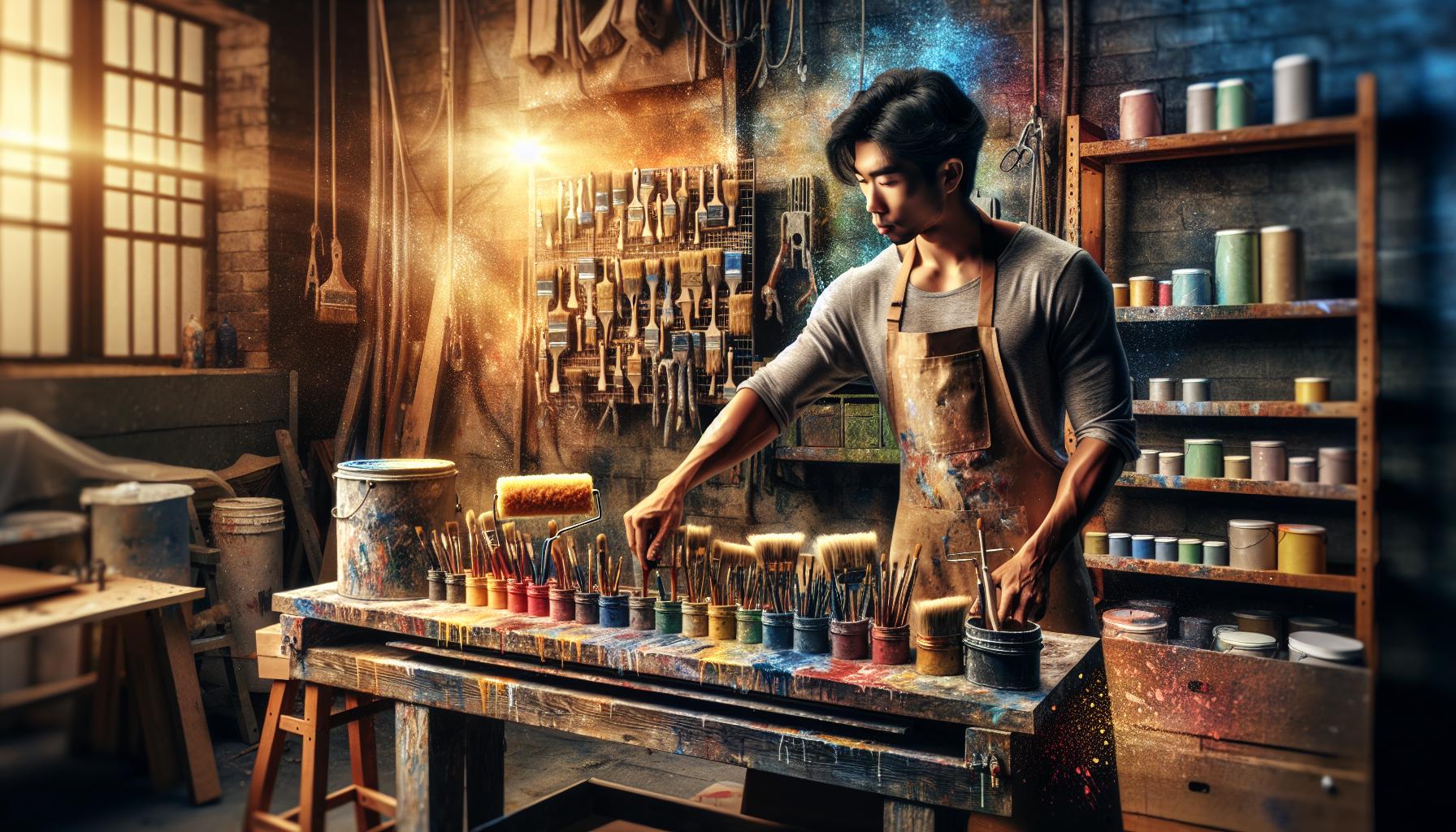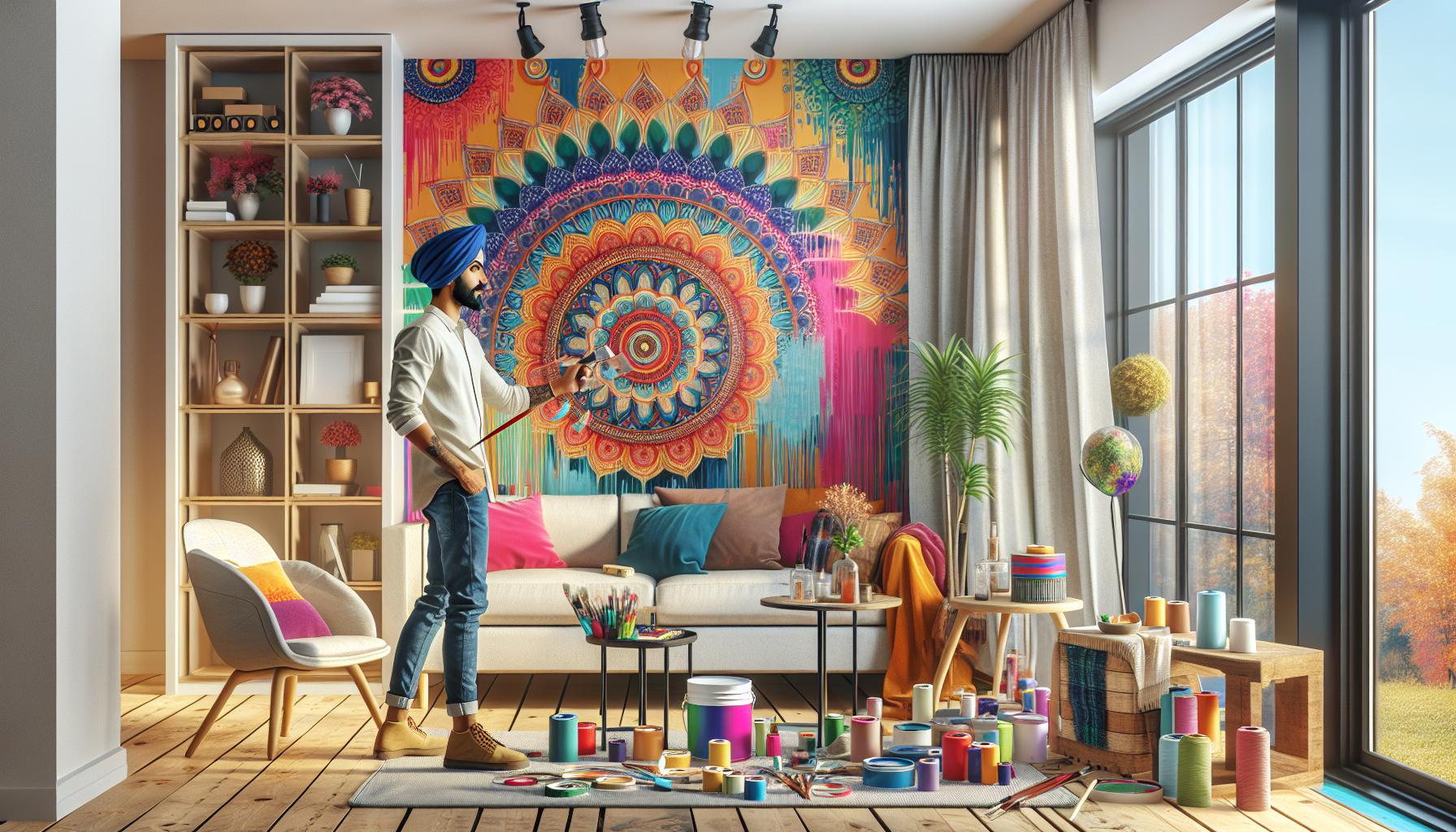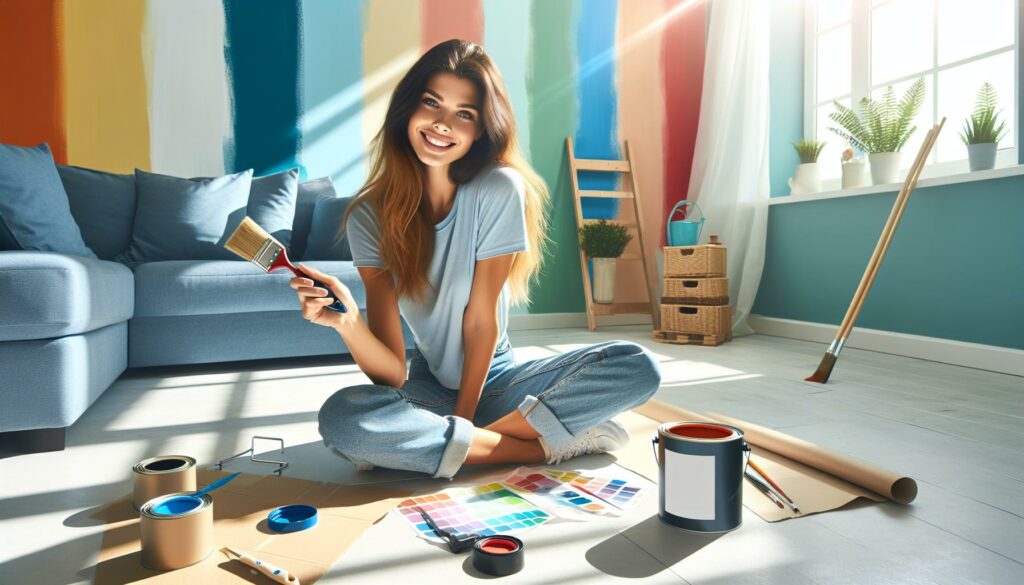There’s something incredibly satisfying about taking a brush to canvas or wall and transforming a space with just a splash of color. DIY painting projects not only unleash your creativity but also give you the chance to personalize your home on a budget. Whether you’re looking to refresh a room or create a stunning focal point, the possibilities are endless.
Key Takeaways
- Unleash Your Creativity: DIY painting projects allow you to express personal style and make impactful changes to your living space without professional help.
- Project Variety: Options range from refreshing wall colors and creating accent walls to transforming furniture with makeovers and artistic murals.
- Essential Tools: Use the right brushes, rollers, and paint types to achieve high-quality results; preparation is key for success.
- Choose Colors Wisely: Selecting the right colors influences the mood and aesthetics of a room; testing paint samples can aid in visualization.
- Safety First: Follow essential safety precautions such as wearing protective gear, ensuring proper ventilation, and keeping a clean workspace to prevent accidents.
- Upcycling for Sustainability: Repurpose and repaint existing items for an eco-friendly approach that enhances decor while saving money.
DIY Painting Projects
DIY painting projects offer numerous benefits, such as enhancing creativity and personal expression. Engaging in these projects allows me to explore various techniques and color combinations, leading to unique results.
I can tackle a wide range of projects, including:
- Wall Painting: Refreshing any room with a new color creates an inviting atmosphere.
- Furniture Makeovers: Updating old furniture with fresh paint breathes new life into my home décor.
- Accent Walls: A bold accent wall acts as a focal point, attracting attention and adding character.
- Artistic Murals: Murals serve as creative statement pieces, transforming blank walls into expressive works of art.
- Decorative Touches: Small details, like painted picture frames or decorative vases, enhance the overall aesthetic.
The accessibility of DIY painting projects empowers anyone to take on home improvement without professional assistance. With a variety of tools and supplies readily available, starting a project proves simple. I can choose paint types based on durability, finish, and application method, ensuring the best outcome for any surface.
These projects often lead to a sense of accomplishment. Each completed task not only enhances my living space but also fosters pride in my creative efforts.
Essential Tools and Materials

Having the right tools and materials is crucial for successful DIY painting projects. Proper preparation enhances the painting experience and ensures high-quality results.
Brushes and Rollers
Choosing the correct brushes and rollers impacts the overall finish of the project. I opt for:
- Synthetic Brushes: Ideal for water-based paints, they provide smooth finishes.
- Natural Bristle Brushes: Best for oil-based paints, as they hold more paint.
- Rollers: I select a roller with a nap length suitable for the surface; a shorter nap for smooth surfaces and a longer nap for textured surfaces.
- Edging Tools: I find edging brushes or pads help in achieving clean lines along trim and corners.
- Paint Trays: I use trays to hold paint, allowing for easy access and reducing mess.
Paint Types and Finishes
Understanding paint types and finishes ensures the right choice for each project. I consider:
- Acrylic Paint: Water-based, quick-drying, suitable for indoor and outdoor use.
- Latex Paint: Easy to clean and ideal for walls; I choose it for most interior projects.
- Oil-Based Paint: Offers durability and is great for trim; I use it cautiously due to longer drying times.
- Matte Finish: Provides a non-reflective surface, perfect for hiding imperfections.
- Satin Finish: Balances sheen and washability; I apply it in high-traffic areas.
- Gloss Finish: Represents the most reflective option, making it great for cabinets and trims.
Selecting the right combination of brushes, rollers, and paint types directly affects the quality and longevity of my DIY painting projects.
Popular DIY Painting Projects

Exploring popular DIY painting projects opens up a world of creativity and personalization. Below are specific projects that transform spaces and enhance decor.
Accent Walls
Creating accent walls adds depth and focus to any room. I can choose bold colors or unique patterns to highlight a specific area. Consider using painter’s tape for sharp edges and stencils for intricate designs. It’s advisable to select a wall that naturally draws the eye, such as behind a bed or sofa. This project requires minimal materials yet delivers a significant impact.
Furniture Makeovers
Transforming old furniture through painting breathes new life into pieces. AI technology, such as text-to-image AI tools, can suggest creative designs and finishes tailored to your furniture style. I can repaint wooden chairs, tables, or cabinets to match my decor. Use chalk paint for a matte finish or spray paint for a smooth application. Preparing the surface ensures better adhesion, so sanding and priming are essential steps. This project not only refreshes furniture but also showcases my personal style.
Upcycling Home Decor
Upcycling offers opportunities to give new purpose to items I already own. I can repaint vases, picture frames, or even light fixtures to fit my aesthetic. This approach promotes sustainability while allowing for creativity. I might experiment with techniques such as ombre effects or distressed finishes to create a unique look. Upcycling projects save money and provide a rewarding way to enhance my home.
Tips for Successful DIY Painting

Achieving great results in DIY painting projects requires attention to detail and a bit of planning. Here are some essential tips that support a smooth painting experience and ensure quality outcomes.
Surface Preparation
Surface preparation forms the foundation of a successful painting project. Cleaning surfaces removes dirt and grease, which ensures better adhesion. Scraping off old paint or repeating unsightly patches enhances overall appearance. Sanding surfaces creates a smooth finish to paint on; it’s critical for wood furniture or textured walls. Priming surfaces, especially those that are bare or previously stained, promotes proper coverage and enhances the paint’s longevity.
Choosing the Right Colors
Choosing the right colors affects the mood and aesthetics of a space. Considering natural light in a room plays a significant role; bright colors can amplify light, while darker shades create cozy atmospheres. Using paint samples can help visualize the final look, making it easier to select complementary colors. Testing swatches on walls allows me to see how colors interact with furnishings and decor. Ultimately, selecting a cohesive palette enhances a room’s decor and showcases my personal style.
Safety Precautions
Engaging in DIY painting projects requires adhering to safety precautions. Ensuring a safe environment prevents accidents and promotes a worry-free creative experience.
- Wear Personal Protective Equipment (PPE): Use gloves to protect skin from paint and harsh chemicals. Wear safety goggles to shield eyes from splashes and particles. A face mask should filter out harmful fumes and dust.
- Ventilate the Area: Open windows and doors to create airflow. Use fans to help disperse fumes, especially when working with oil-based paints or strong solvents.
- Follow Paint Instructions: Always read product labels for safety warnings and recommendations. Ensure proper usage and store materials according to guidelines to prevent hazards.
- Keep Kids and Pets Away: Designate a safe area for painting. Ensure children and pets are out of the workspace to reduce safety risks and distractions.
- Manage Tools Properly: Handle brushes, rollers, and other tools carefully. Store sharp objects like utility knives out of reach when not in use.
- Dispose of Materials Responsibly: Follow local regulations for disposing of paint and cleaning supplies. Use designated drop-off locations for hazardous materials.
- Avoid Contact with Electrical Sources: Ensure all electrical equipment is turned off before starting. Keep paint and water away from outlets and cords to prevent shock hazards.
- Wear Appropriate Clothing: Choose old clothes or those designated for painting. Avoid loose-fitting garments that can snag on equipment or surfaces.
By observing these precautions, I can execute my DIY painting projects confidently while maintaining a safe and organized workspace.
Engaging in DIY painting projects has truly transformed my approach to home decor. The ability to express my creativity and personalize my space is incredibly fulfilling. Each project not only enhances my living environment but also brings a sense of accomplishment.
With the right tools and techniques I’ve learned along the way it’s easier than ever to achieve professional-looking results. I’ve discovered that even small changes can make a big impact.
As I continue to explore new ideas and techniques I’m excited to see how my home evolves. If you’re considering a DIY painting project I encourage you to dive in. You might just find it to be one of the most rewarding experiences you can have in your home.

